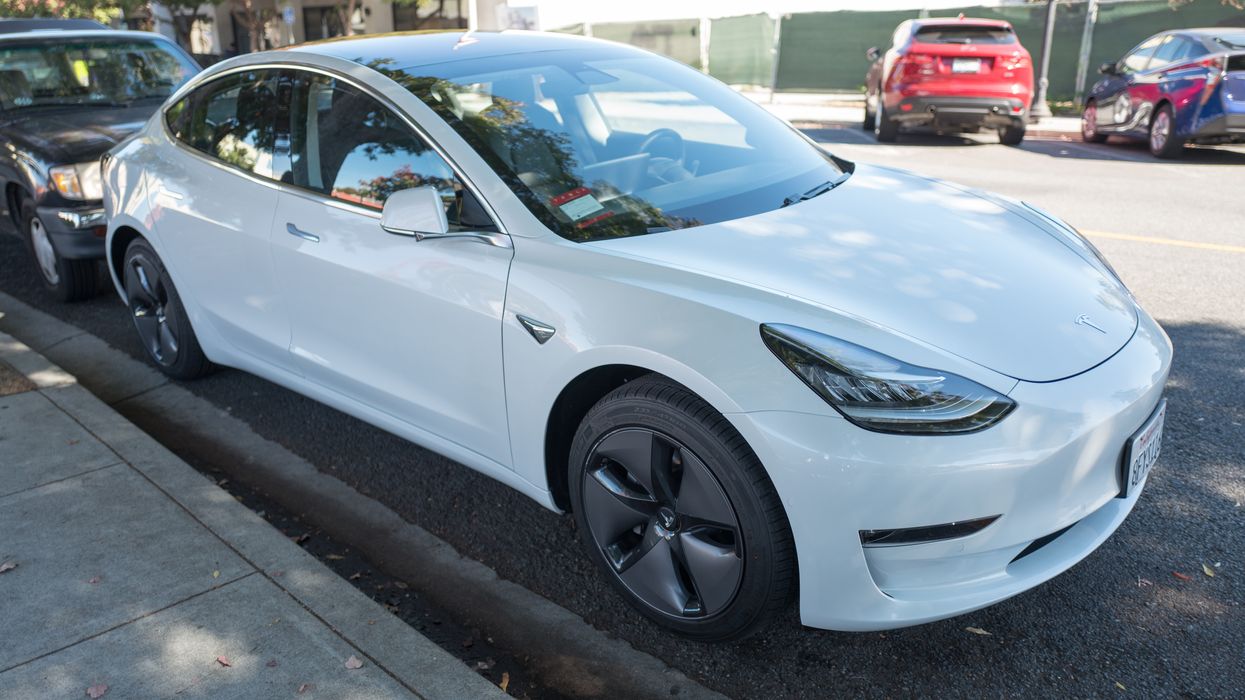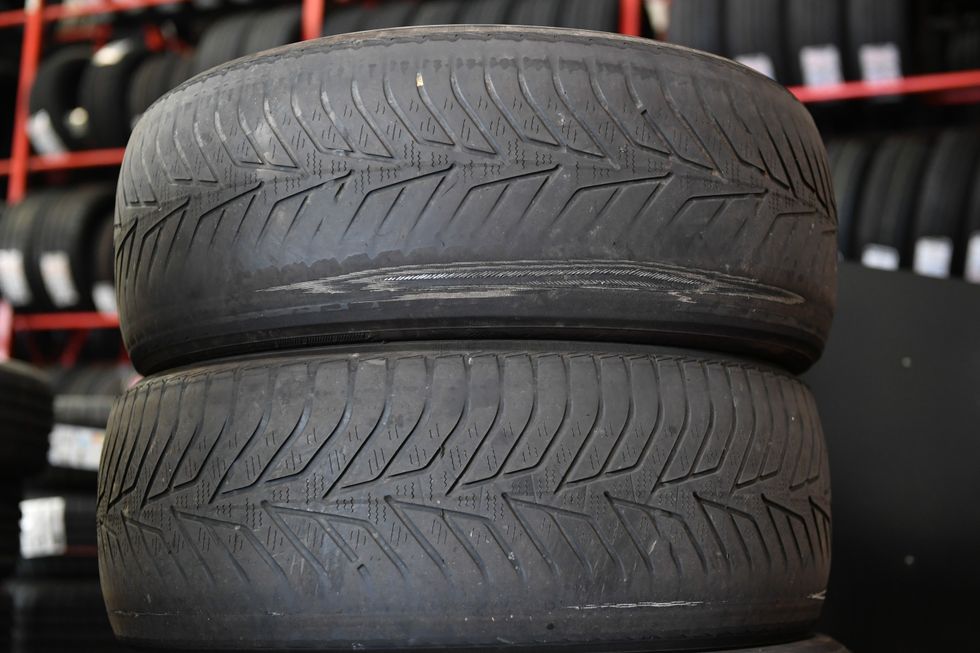Electric cars and SUVs causing 'massive problems' with tyre wear emissions and pollution

The Tesla Model 3 lost 26 per cent more tread than the hybrid vehicle
|GETTY

Emissions from tyre wear can be 1,000 times higher than car exhaust emissions
Don't Miss
Experts are warning that tyre wear from larger cars and electric vehicles could have a dramatic impact on emissions.
The UK may struggle massively with this issue given that motorists are choosing to drive larger and heavier SUVs and 4x4-type vehicles.
Some car brands have even taken the decision to stop selling other types of vehicles in the UK and prioritise SUVs, including Volvo.
As the weight of vehicles increases, there is increased pressure on the tyre, resulting in tiny particles of rubber being scraped off onto the road and into the atmosphere.
WATCH NOW: Danny Kelly reacts to electric vehicle sales
Data from Emissions Analytics found that particulate matter from tyre wear can be 1,000 times higher than car exhaust emissions.
It found that car tyres may produce as much as 9.28 grams of particulate matter per mile, although this is a worst-case scenario.
Tyre wear rates from electric cars may be higher than other vehicles given the larger batteries and the overall weight of the car.
Research from the organisation found that the tyres of a Tesla Model 3 were notably more worn than that of a comparable hybrid, the Kia Niro, when driven for 460 miles.
The fully electric car lost 26 per cent more tyre tread than the hybrid vehicle.
Major brands including Mercedes, Range Rover and Rolls-Royce are catering to motorists by producing larger vehicles.
Leo Murray, co-founder of Possible, said: “These problems [tyre wear] are real but we don’t want to provide ammunition to the enemy.
“There’s a chilling effect of the constant critiques of moves towards net zero.
“Slowing down the transition to EVs would be a disaster,” he told The Times.
Tyre wear is the second largest microplastic pollutant in the environment, after single-use plastic.
It also accounts for up to 50 per cent of air particulate emissions from road transport, according to the Tyre Collective.
Research from the European Tyre and Rubber Manufacturers Association found that driving style is the biggest influencing factor on tyre wear.
This is followed by other factors like road curvature, the surface of the roads, the vehicle itself and the design of the tyre.
Matt Finch, UK policy manager for Transport & Environment, said: “Pollution from tyre wear is a massive problem that no one is talking about.
LATEST DEVELOPMENTS:

Data has shown electric car tyres become worn quicker than hybrid vehicles
|PA
“EVs are way better than their fossil predecessors because they don’t spew out a toxic cocktail from a tailpipe, but they are not perfect.”










